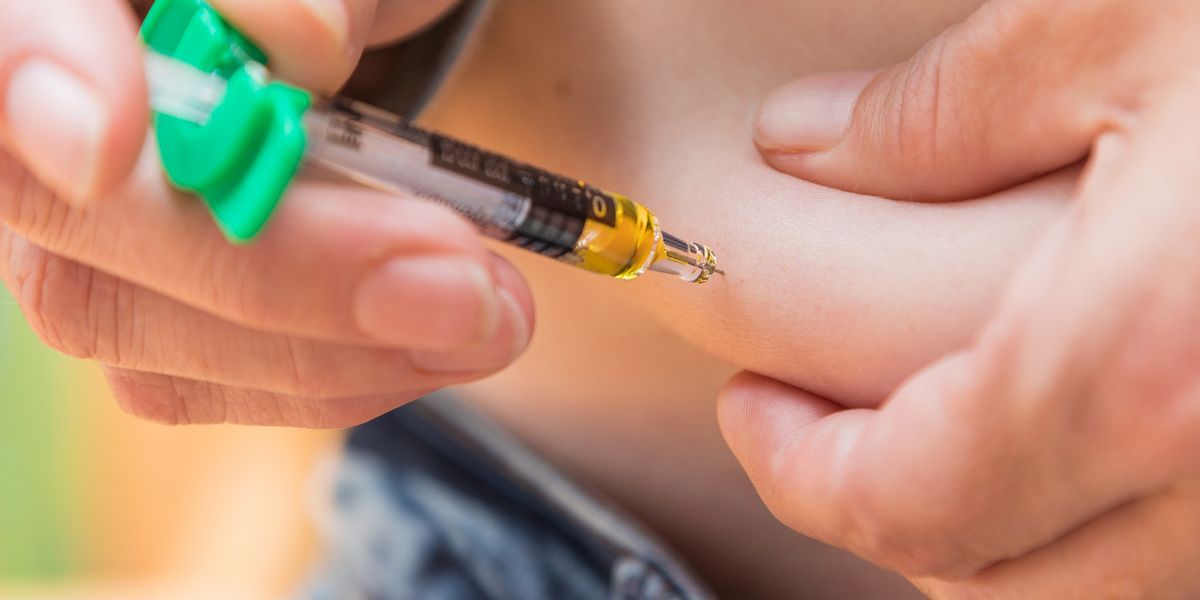An insulinoma is a rare tumour of the beta cells in the pancreas that results in an excessive amount of insulin being produced.
As insulinomas produce insulin, they can cause hypoglycemia and lead to dangerously low blood sugar levels. They generally occur in people between the ages of 40 and 60.
Insulinomas can be a cause of diabetes if the treatment of insulinoma requires a significant amount of the pancreas to be removed.
90 per cent of insulinomas are benign (non-cancerous), but most of the time these tumours will need to be removed by surgery. 10 per cent of people will have more than one tumour, while in one out of 10 cases, the tumour will spread to another body part.
How is insulinoma related to diabetes?
Secondary diabetes can be caused by insulinomas if the whole or significant amount of the pancreas is removed as insulin is no longer produced.
Insulinomas lead to hypoglycemia, which people with diabetes face who are susceptible to hypoglycemia due to medication such as insulin , sulfonylureas and glinides.However, research generally suggests that insulinomas in people with pre-existing diabetes is rare.
J. Svartberg et al assessed that the relationship between diabetes mellitus and insulinomas of the pancreas is not clear.
They concluded, however, that when an insulin-using patient with diabetes experiences markedly reduced insulin requirements, insulinomas should be considered as a possible cause.
E Ademoğlu et al claimed clinicians should bear in mind insulinomas could exist together with diabetes mellitus, but Muhammad Fuad Hameed et al report that this incidence is rare.
Symptoms of insulinoma
The symptoms of insulinoma are largely similar to the symptoms of hypoglycemia , which include:
- Blurred vision
- Anxiety
- Sweating
- Trouble concentration and
- Weakness
These are all typically mild symptoms caused by changes in insulin levels that cause low blood sugar levels. However, more serious symptoms can include convulsions and loss of consciousness.
These symptoms normally disappear after the consumption of glucose to raise blood sugar levels.
Causes of insulinoma
Insulinomas that develop in the pancreas are uncommon and only affect between one to five people out of one million each year. It is unclear what causes an insulinoma in most cases, but people with multiple endocrine neplasia type 1 (MEN-1 syndrome) – a genetic syndrome that enlarges hormonal glands – are more at risk.
The median age of diagnosis is 47-years-old, and while cases have been identified of insulinomas in young children and people as old as 70, these are extremely rare.
Diagnosis of insulinoma
A blood test will be administered to measure your blood glucose and insulin levels – a low blood sugar with high level of insulin will confirm diagnosis of insulinoma.
Additional tests may include computerised tomography (CT) or magnetic resonance imaging (MRI) scans to help detect the location of an insulinoma in the pancreas, and assess whether it is cancerous.
However, insulinomas can be problematic to locate due to their small size. An endoscopic ultrasound may be used if standard scans cannot locate the tumour.
Treatment of insulinoma
Surgical removal of an insulinoma is often recommended when there is a single tumour, with over 90 per cent of patients not requiring further treatment following surgery.
In rare cases, part of the pancreas may be removed if there are many tumours, while the entire pancreas could be removed if several insulinomas continue to reappear.
The removal of the entire pancreas, known as a pancreatectomy, leads to diabetes as no insulin is produced anymore in the body – insulin injections would be then be required.








